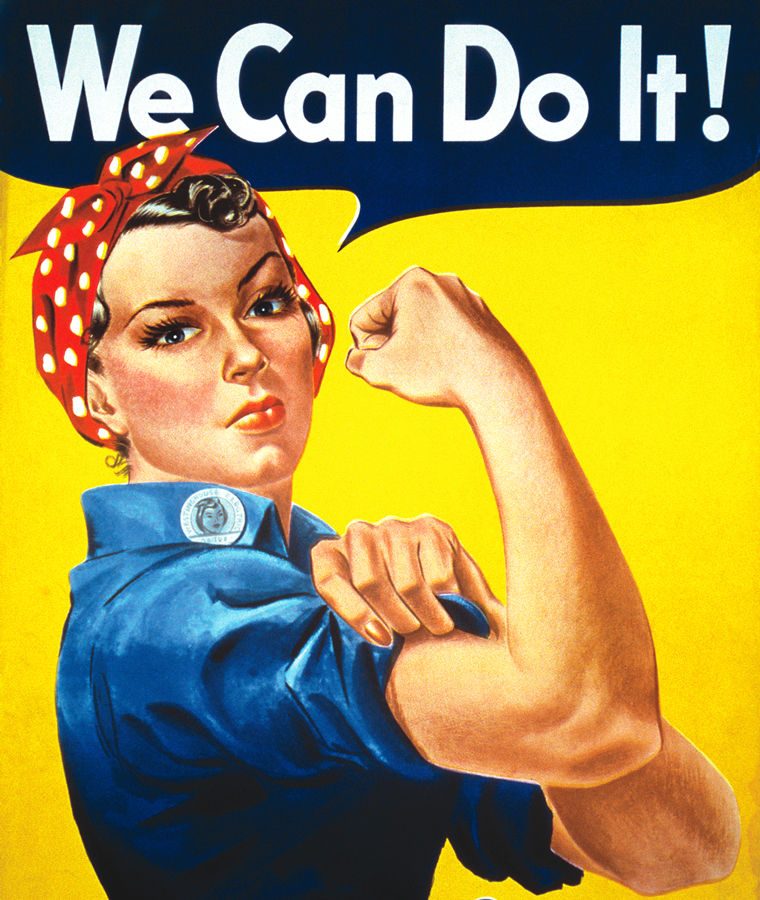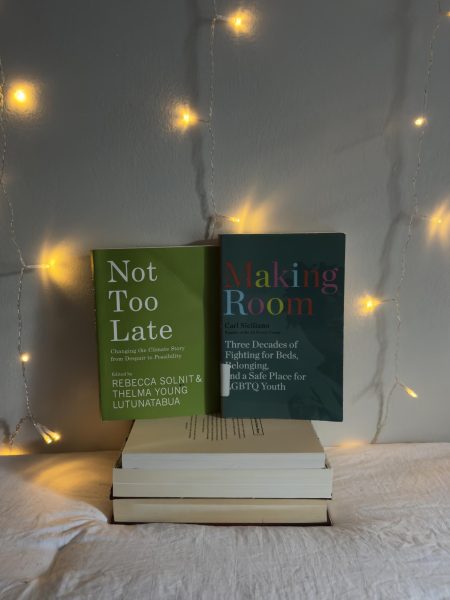Rosie the Riveter aims to rally women without showing face
To prove society still has a long way to go before achieving gender equality, the Bill, Hillary & Chelsea Clinton Foundation launched an ad campaign where women are “Not There.”
In one example of the campaign, Rosie completely disappears from the iconic “Rosie the Riveter” image, so only a yellow backdrop is present in the display.
On International Women’s Day, different companies and media outlets featured these ads by replacing any women in their advertisements or issue covers with “NOT-THERE.ORG.”
The companies participating were not small. Dove, Beats by Dre and Glamour are just a few examples of companies and publications that agreed to erase women in their advertisements. The campaign even showed up on Snapchat’s channel in Snapchat Discover, Snapchat’s news stream.
The foundation also released a witty video that voices different female celebrities including Amy Poehler and Cameron Diaz. However, these women are “not there” because they are never shown in the video. The video plays on this idea and gives information about gender inequality throughout the world by presenting different facts and charts.
These statistics can be found on the website notthere.noceilings.org, under “No Ceilings: The Full Participation Project,” which encourages people to look at the data and read the stories on the website about gender inequality.
The website also displays how people should “take action” by tweeting about the campaign.
People can even follow the foundation on Twitter (@ClintonFdn) to learn more. The website also encourages women to “make a statement” by changing their profile picture to a blank silhouette.
Clinton Foundation Vice Chair Chelsea Clinton spoke about the campaign and how it could change the world.
“By knowing the facts and what has worked and hasn’t worked to advance gender equality, we can accelerate the pace of change for women and girls — both at home and around the world,” Clinton said.
This campaign is spectacular.
It recognizes gender issues around the globe and puts them into conversation with a noticeable and clever image (or rather, no image) by using popular celebrities, companies and media outlets. Advertisements are everywhere, so completely erasing women from them is extremely eye-catching.
Most importantly, the campaign signifies that we are in the 21st century, and that the gender inequality in today’s world is unacceptable.
In order to achieve gender equality, we must talk about it and face the facts, which is exactly what this campaign is doing.
Making people aware of these issues and how they harm women is essential if we ever want to live in a world with complete gender equality. Until then, the campaign reminds us that in the United States and around the world, we are “not there” with gender equality.






